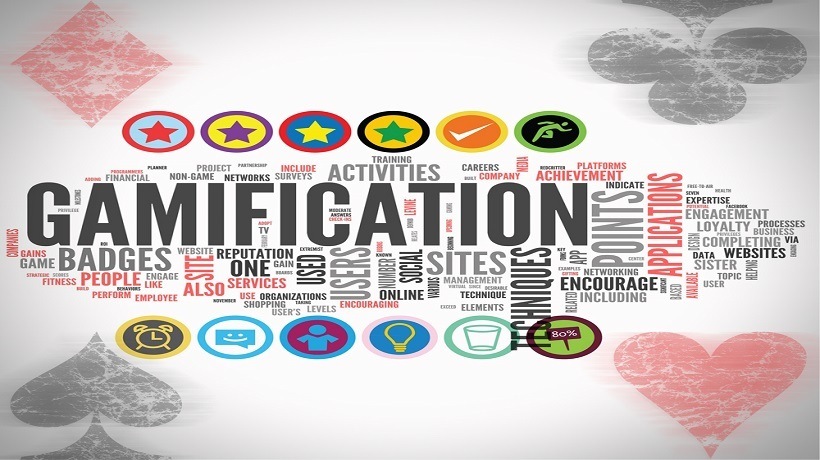Utilizing Gaming Elements To Create Effective Learning Games
Digital games have the potential to create active and engaging learning environments, supporting problem-solving, and learning through practice. This is true for K12 students as well as seasoned corporate learners. Learners can play, explore, experiment, as well as learn with game-based learning. However, using games for learning requires a rethinking of the learning objectives, a new model for ownership of tasks, complex structures for support of learners, new ways of evaluating learners, and a host of technological integration issues that have to be undertaken. So, how can one create effective learning games?
There are features included in games that help immerse us in the play experience. If the game is being designed for commercial purposes, the sole aim is to come up with game mechanics that are fun and game elements that are intriguing. But when trying to design effective learning games, game mechanics and game elements that are utilized have to complement the learning goals.
Here are some game mechanics that can be utilized for the design of effective learning games:
- Conflict.
For a game to be interesting, there should be some sort of conflict to present a challenge for the player to overcome. The challenge could be a physical obstacle, combat with another player, or a puzzle that has to be solved. There are various types of conflict that can be built in game-based learning. Designers can incorporate a conflict that arises with other players, where learners are pitted against one another. A sense of collaborative learning can also be built in with a challenge that all players must work together to overcome. Learners can be pitted against the game itself, to create excitement. Designers can also represent real world conflicts that learners can learn to deal with, like conflict between quality and time constraints or quality and budget. This empowers the learners to instill within themselves skills needed in everyday work life. - Strategy and chance.
Strategy-based games put a lot of control into the players’ hands in the form of decisions they can make that affect game play or their odds of achieving the goal. On the other hand, games that are heavily based on chance put the player in a highly reactive mode where they have little control over the outcome. For best learning delivery, serious games should combine a bit of both strategy and chance within the design to make it interesting. Most challenges within the work scenario of corporate employees are multi-layered. The problem that they encounter within the game can be based on chance while the solution that they come up with can involve the element of strategy. The blend of both chance and strategy gives the learners something to do and also provides required relief. - Aesthetics.
Most seasoned game developers would agree that aesthetics consistently rate as an area of high appeal. By themselves, aesthetics have the power to pull people into the game. Visuals are a powerful means of engaging players and helping them immerse into the game experience. In video games, aesthetics are a huge part of this experience. With learning games, the temptation can be to cut corners on aesthetics and not realize the impact this has on the learning value of the game. Even if the emphasis of aesthetics in educational games is low compared to that of entertainment games, it is necessary to create certain amount of visual appeal in learning games as well. If budgetary restraints that do not include the moneys for a dedicated graphics designer for the game, online resources can be utilized for inserting suitable aesthetics into them. Here are a few:- OpenGameArt: Graphics bundles can be downloaded and used in digital games.
- Game Templates: Cut-out people and graphics, as well as some “game” templates.
- Theme and story.
A theme can add interest and create engagement within a learning game. The theme can be conveyed with the visuals and with a brief “back story” that is included in the rules. Often, when themes are introduced within games, there is no accompanying narrative running through the game. Thematic elements are used to convey the idea of theme with minimal story. However, an entire story line can also be inserted within a learning game to make it interesting. Story offers a narrative thread that pulls through an entire game. Learners find it far easier to remember facts when they are part of a narrative than simply mugging up facts devoid of any “story” or context around them. To create a story line for effective learning games, it is important to keep in mind that a strong story has the 4 elements below. While it does take considerable efforts and a lot of creative thinking to come up with a string story within a game, it is certainly worth the efforts.- Characters.
- Plot: Something has to happen for it to be a story.
- Tension: Often thought of as conflict.
- Resolution.
- Rewards.
Rewards are things or keepsakes that players earn through game play. The new wave in learning games and in gamification of learning is to give players achievements for accomplishing certain tasks or hitting certain milestones. There is a general trend towards giving lots of rewards, but game designers have to use them effectively. A popular strategy is to reward people for completing boring or menial tasks which are necessary within the game. It is also important to give rewards or points for performance rather than completion. For example, giving someone a badge for completing a section may excite learners to hit completion even without understanding the concepts within the game. However, if the reward is given for completion of a section to a certain standard of proficiency, it will encourage learners to perform their very best. Within a game, score is a powerful feedback tool. The players should understand the ways of accruing points or other incentives well and this will motivate them to play better as well as learn better.
In conclusion, game mechanics utilized to create effective learning games should enhance gaming experience and contribute constructively to the learning experience. Within multiple game elements, deciding the perfect one includes a process of testing and tweaking – which will undoubtedly lead to the creation of a successful learning game.








